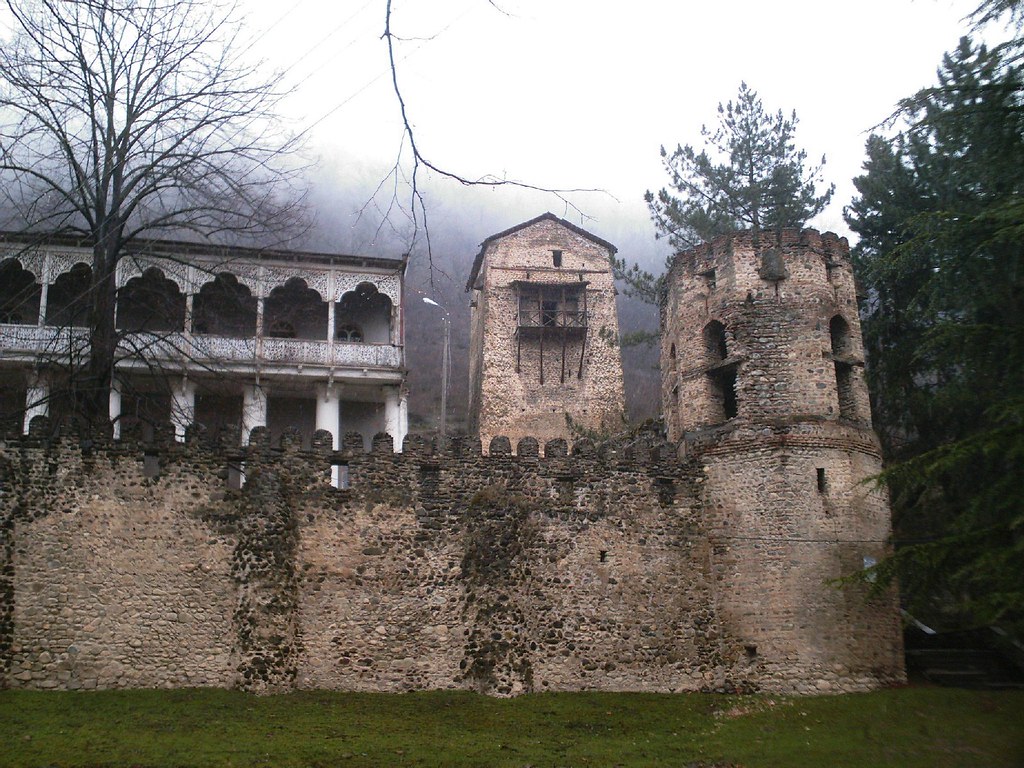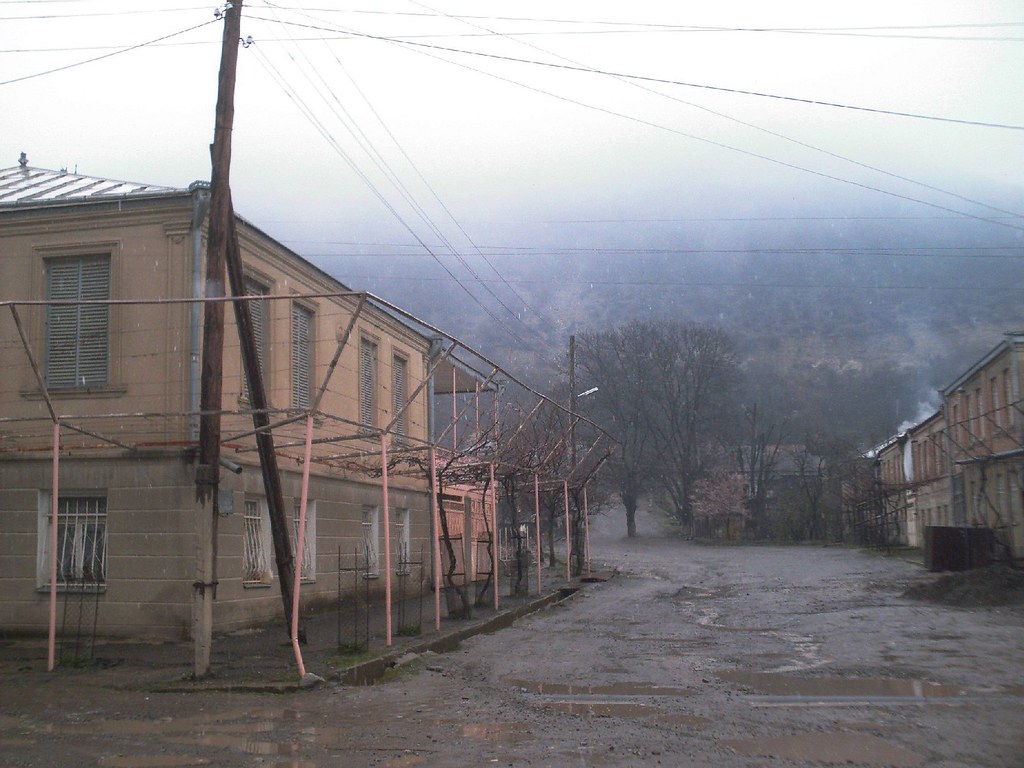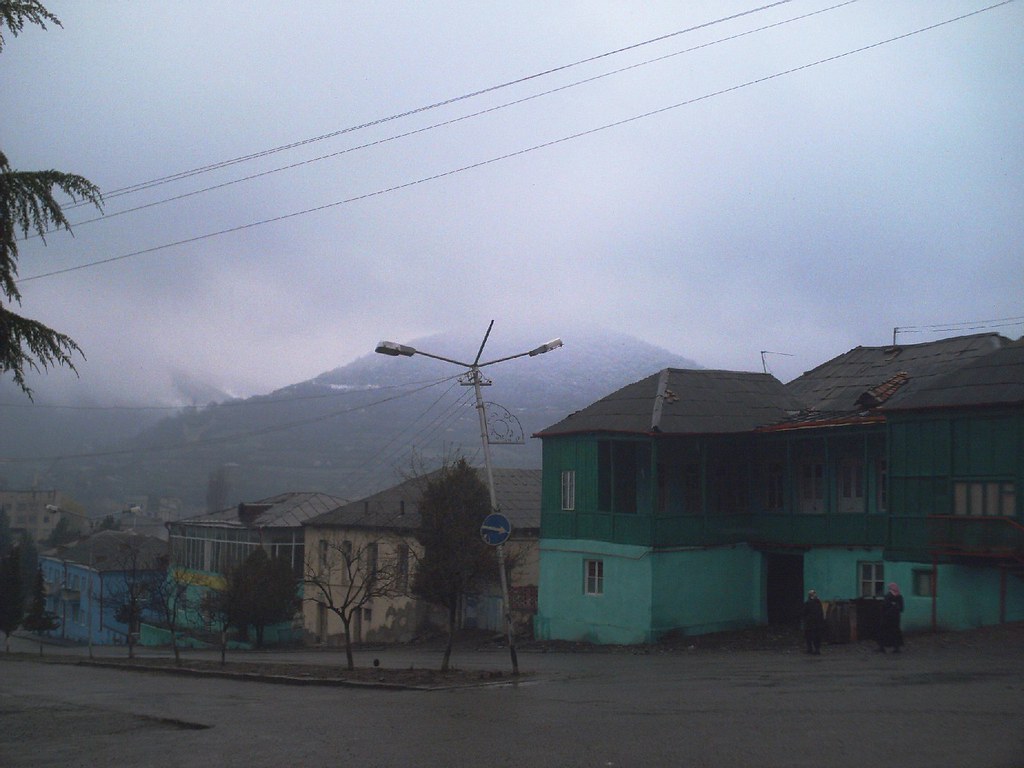Akhalgori, a Medieval Centre Fallen in Lethargy
Photos & Article by Nicolas Landru
High in the Ksani valley on the southern slopes of the Higher Caucasus in Georgia, Akhalgori lays almost at the end of a road that leads nowhere, between the Inner Kartli Highland and the Mount Kazbek complex. Locked between the South Ossetian conflict zone and the regions of the Georgian Military Highway, Mtiuleti and Aragvi, which are traditionally a transit zone between Russia and Tbilisi, it guards a poorly frequented valley which, unlike the Roka tunnel at the west and the Darial pass at the east, is a dead end.
However, it has been an important place throughout earlier Georgian history since early middle ages, the political centre of the powerful Ksani Eristavis (dukes), with which the royal central power had to count, and which centuries long roughly disputed their hegemony on the eastern Georgian Higher Caucasus with their neighbours, the Aragvi Eristavis. The town prospered and as a military-political centre, and it nowadays still contains a rich heritage of medieval civil and military architecture (several fortifications, fortified churches, and the Eristavis Castle).
But since the Russian conquest of the Caucasus, the Ksani valley remained somewhat backward, not being, as the neighbouring regions, an axe of communication between South and North Caucasus.
In Soviet times it became an administrative part of the South Ossetian Autonomous Region, the centre of a Rayon (district) – its population being ethnically mixed Georgian and Ossetian. However, having never had strong connections to Tskhinvali, the South Ossetian capital, and having a clear Georgian majority, it did not get embroiled in the separatist conflict of the early 90’s. Its district was attached to the Mtskheta-Mtianeti region which groups a big part of the mountainous regions of the eastern Georgian Higher Caucasus. It even became an example of good neighbourhood between Ossets and Georgians, since the two communities seem until nowadays to have kept living peacefully and without too much influence of the conflict. Although apparently a significant part of the Ossetian population has left, mainly to North Ossetia in Russia, this might be rather more rooted in the disastrous economic situation of the valley than in inter-ethnic conflicts.
Today, the town and the regions still bear the economic collapse that followed Georgian independence. Remote in a dead-end-valley, it has few chances to enjoy a commercial development; the road is in poor condition and doesn’t encourage the implementation of new economic activities. The soil is also not favourable for agriculture; the only significant activity of the city is the Lomisi beer factory, from which nearly half of the town’s inhabitants are living. The beer is one of Georgia’s most famous one and keeps the place out of complete lethargy.
Surrounded by rough slopes of the Caucasus Mountains, concentrated on the narrow bank of the Ksani River which is here no more than a violent mountain stream, Akhalgori is a surprising mix of a mountain village, an abandoned industrial countryside town and a medieval military borough which exhibits astonishingly well-maintained vestiges of the past.
















No comments:
Post a Comment